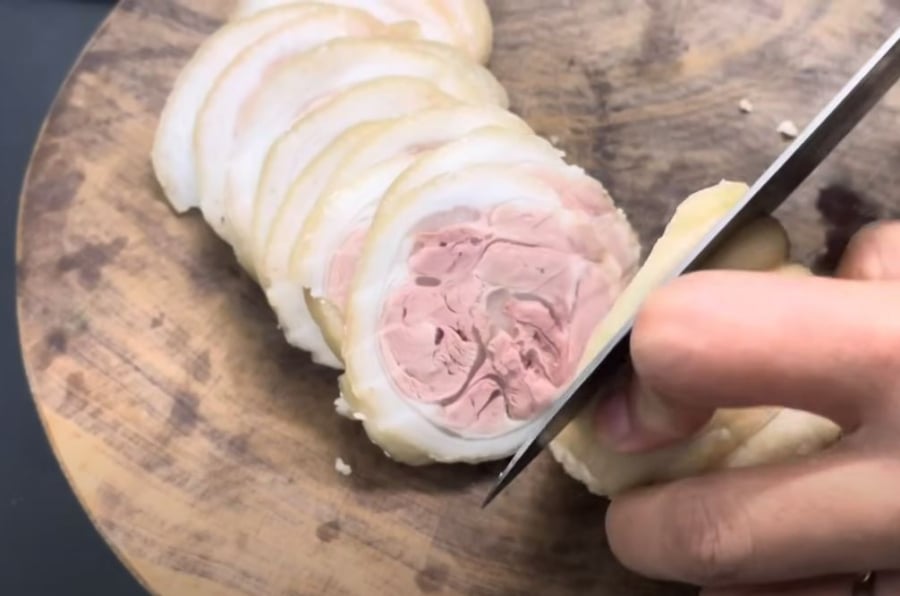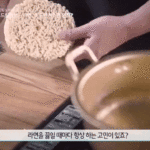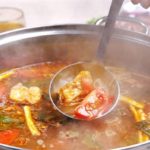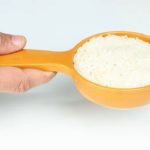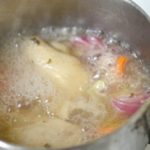Selecting and preparing pork leg meat
Choosing fresh and good quality ingredients is a decisive factor in the quality of the dish. When buying pork leg meat, choose pieces that are firm, light pink in color, and naturally fresh-looking. The cut should be dry but still retain a certain amount of moisture. Press your finger onto the meat and it should have good elasticity.
Avoid buying pork leg meat that is soft, slimy, turning dark in color, or has a strange odor.
According to folk experience, it is recommended to buy the back leg. Back leg meat will be firmer and more tender compared to the front leg, suitable for making boiled dishes. The front leg is better used for cooking stewed dishes.
When you bring the pork leg home, wash it thoroughly. You can use diluted saltwater to remove dirt and also get rid of the unpleasant odor. Pat dry the pork leg and then roll it into a round shape, securing it with string or a cooking elastic band. Doing this will give the meat a round and visually appealing shape after boiling and slicing. Note that the binding should not be too tight as the meat may expand during boiling.

Roll the pork leg meat into a round shape and secure with string or an elastic band.
Choosing the right seasoning for boiling the meat
Before boiling the meat, you can blanch it once to remove impurities and get rid of any unpleasant odor. If you put the meat into boiling water to cook, the meat will taste sweeter. If you boil the meat with cold water, the resulting broth will be richer in flavor. You can choose the method that suits your preferences.
Regardless of the method chosen, you need to ensure that there is enough water to completely submerge the meat. You can add a few dried shallots and crushed ginger. Season with stock cubes or salt to enhance the flavor. To get rid of the meat’s odor, you can add a little white wine.
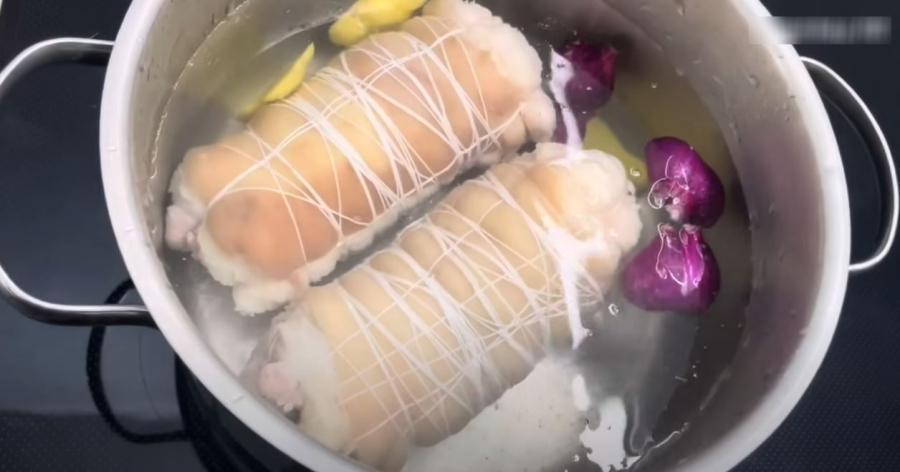
Add ginger and shallots to make the boiled pork leg more aromatic and prevent it from having an unpleasant smell.
When the water boils, reduce the heat so that the meat cooks from the inside. During the boiling process, skim off any foam that floats to the top in order to have a clear and more fragrant broth. The cooking time can range from 15 to 20 minutes, depending on the size of the meat. After boiling, do not immediately remove the meat but cover the pot tightly and let it sit for another 10 minutes to allow the meat to absorb the juices and prevent it from being red on the inside. To check if the meat is cooked, insert a chopstick into the meat. If no pink liquid flows out, it means the meat is cooked.
Soaking the meat in ice water
When the meat is cooked, do not immediately remove and slice it. Prepare a bowl of cold ice water with squeezed lemon juice and add the lemon peels for fragrance. Remove the meat from the pot and immediately soak it in the ice water. This thermal shock technique will help the skin become firmer and crispier. Soaking the meat in lemon ice water also helps keep the meat white and fragrant without turning dark.
When the meat has cooled, you can remove it from the water and slice it into thin pieces suitable for eating. However, to make the meat firmer, you can put the meat in the refrigerator for a few hours.
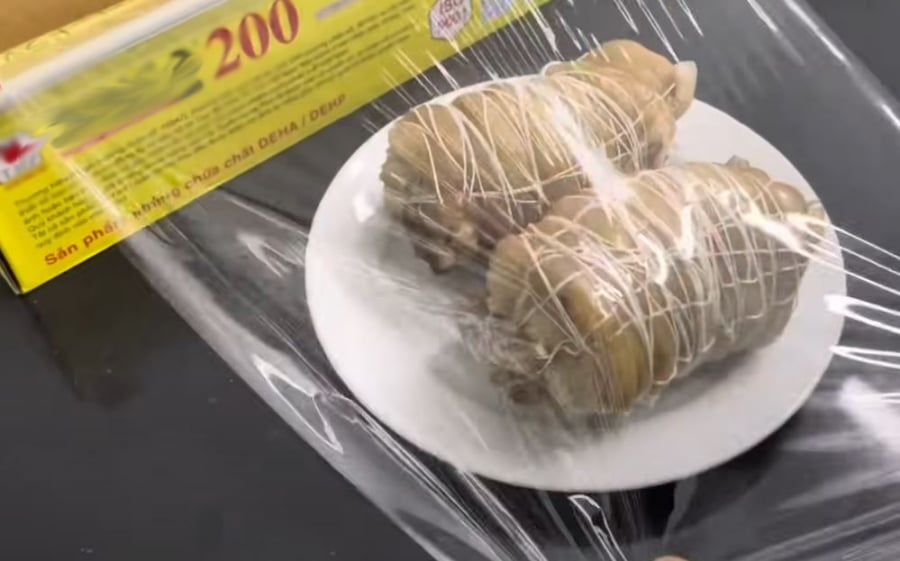
You can wrap the pork leg meat in cling film and refrigerate it for a few hours for a firmer texture.
A lower temperature will help the meat stick together, making it firmer and easier to slice thinly. This is a small tip commonly used in restaurants.
